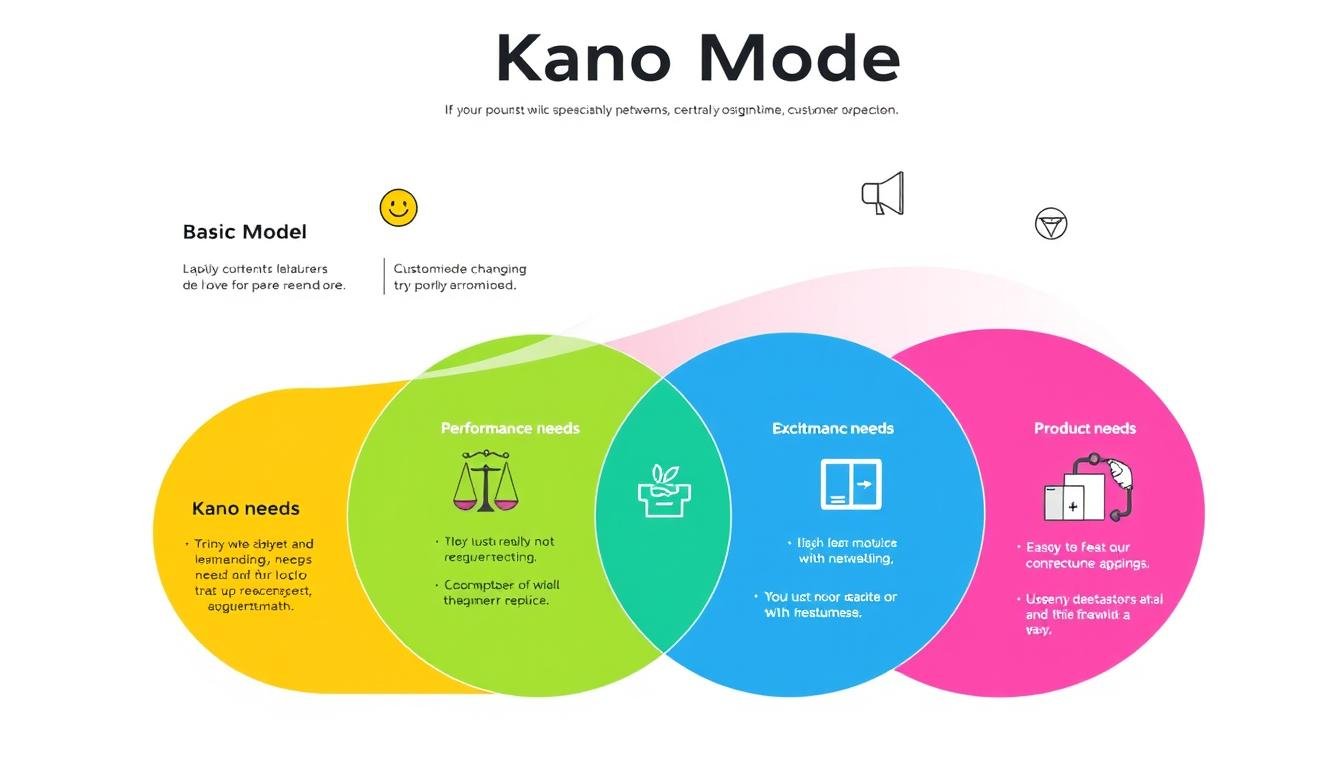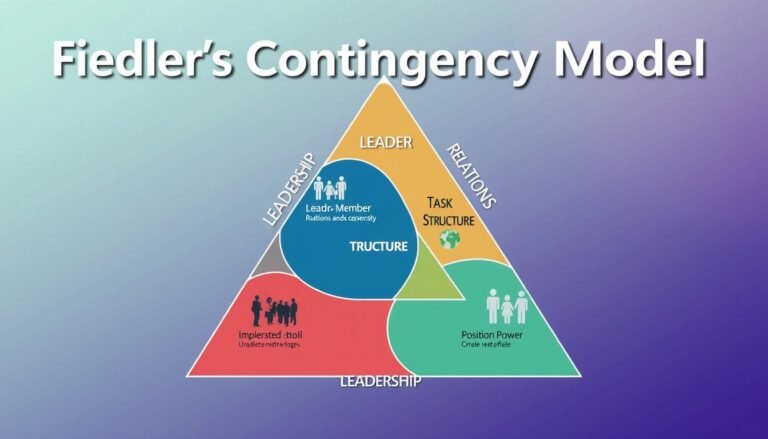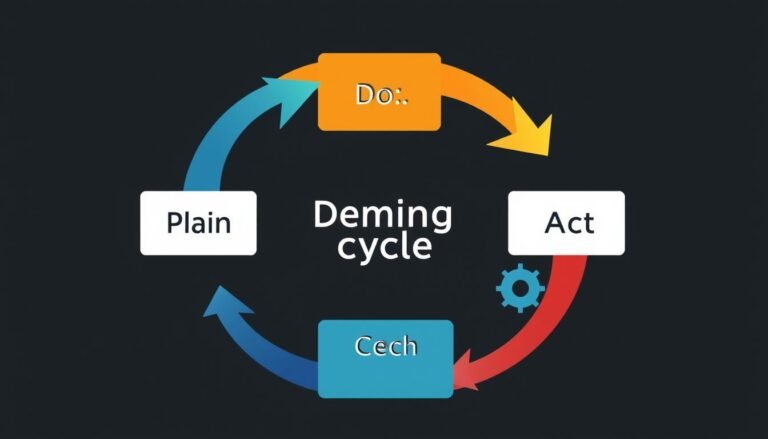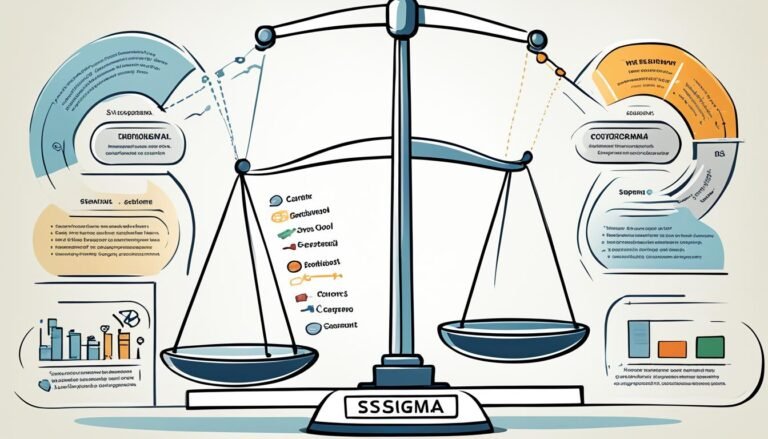Kano Model: Boost Customer Satisfaction
Ever wondered why some products win over users while others don’t, even if they’re similar? It’s all about making customers happy, a key part of making products. The Kano Model, created by Dr. Noriaki Kano in 1984, helps us understand how customers feel about different product features. It shows how to pick what to offer to make users happier and stand out from the competition. This guide will explain the Kano Model and its big role in making customers more satisfied.
Key Takeaways
- The Kano Model categorizes features based on customer emotional responses.
- Understanding Must-be, Performance, and Attractive features is crucial for product success.
- Kano Analysis aids in identifying priority areas for product development.
- It helps in determining the right mix of features that enhance user experience.
- The model provides a framework for effective feature prioritization in limited-resource scenarios.
Understanding the Kano Model
Dr. Noriaki Kano introduced the Kano Model in 1984. It’s a powerful tool for understanding what makes customers happy. It helps businesses see how different features affect customer satisfaction.
This method looks at how products make customers feel. It leads to better loyalty and satisfaction.
Definition of the Kano Model
The Kano Model gives a clear way to sort product features. It helps businesses know which ones to focus on. It talks about three main types of features: Must-be, One-dimensional, and Attractive.
Must-be features are the basics that customers expect. If a product lacks these, customers get very unhappy. One-dimensional features make customers happier when they’re better. But they don’t create a strong emotional bond.
Attractive features surprise customers in a good way. They offer something extra that delights customers. This can make a product stand out in the market.
Origins and History of the Kano Model
Dr. Noriaki Kano created the Kano Model to change how we look at product features. His research showed five emotional responses customers have to features. This helps companies go beyond what customers expect.
For example, facial recognition in smartphones is seen as an Attractive feature. On the other hand, laptop color might not matter much but is important to some customers.
The Kano Model helps improve customer satisfaction by guiding product development. It keeps businesses in tune with what customers want. This way, companies can stay ahead by adapting to new needs.
The Importance of Customer Satisfaction
For any business, knowing how important customer satisfaction is key to success. Happy customers often come back and tell others about their good experiences. This builds a strong bond that keeps them loyal.
Why Customer Satisfaction Matters
Happy customers stick around and stay interested in a brand. Companies that focus on making customers happy see more loyalty. This loyalty turns into lasting relationships, which are vital for a business to thrive.
When customers feel valued, they get a positive feeling. This makes them more likely to share their good experiences with others.
Impact of Customer Satisfaction on Business Success
High customer satisfaction means better business performance. Using tools like the Kano Model helps companies understand what customers want. This lets them focus on the most important features.
Investing in key features makes the customer experience better. This leads to more satisfied customers. Happy customers not only buy more but also help improve the brand’s reputation. This shows how crucial it is to really get what customers want.
Kano Model Categories and Their Significance
The Kano model breaks down product features into five groups, each showing a different level of customer satisfaction. Knowing these groups helps businesses focus on what customers really want. This way, they can improve their products and meet user needs better.
Must-be Features
Must-be features are the basic things customers expect from a product. Not having these can make customers unhappy, even if they don’t add much to satisfaction. For example, brakes in a car or a secure login for online services are must-be features. They’re expected and needed, but often go unnoticed until they’re missing.
Performance Features
Performance features directly affect how happy customers are with a product. Investing more in these can make customers happier. For example, a car’s fuel efficiency or how well different online services work together are performance features. Improving these can make a product stand out in the market.
Attractive Features
Attractive features go beyond what customers expect, making them feel happy when they’re there. These features don’t cause disappointment if they’re not there, but they do make a big difference when they are. Things like luxury seat warmers in cars or fun surprises in software are examples of attractive features.
Indifferent Features
Indifferent features don’t really matter much to customers. They don’t really change how satisfied customers are. Things like hard-to-find part numbers in cars or the complex tech behind online services are indifferent features. Knowing this helps teams focus on what really matters.
Reverse Features
Reverse features make customers unhappy. They can lower satisfaction and make experiences worse. For example, pushy sales tactics or complicated online processes are reverse features. It’s important to get rid of these to keep customers happy.
How to Conduct a Kano Analysis
Conducting a Kano analysis helps companies find out which features matter most to customers. It’s key to knowing how different product features affect customer happiness and loyalty.
Identifying Potential Product Features
First, brainstorm potential product features based on what users need and what competitors offer. Teams make a list of features to check out. This step makes sure the most important features, which could make customers happy, are looked at in the Kano questionnaire.
Designing a Kano Questionnaire
A good Kano questionnaire is crucial. It asks two questions about each feature: one about how customers feel with the feature and another about without it. This way, teams get clear feedback from customers on what they like.
Collecting and Analyzing Customer Feedback
Teams use different ways to get customer feedback, like surveys. Analyzing this feedback is key. It helps put customer feelings into the Kano model’s categories, like Must-be, Performance, and Attractive features. Knowing this helps companies focus on features that meet customer needs best.
| Feature Type | Description | Customer Impact |
|---|---|---|
| Must-be Features | Basic expectations that must be met to avoid dissatisfaction. | Critical for customer adoption. |
| Performance Features | Features that improve satisfaction proportionally with increased functionality. | Enhances user experience and differentiation. |
| Attractive Features | Unexpected features that positively surprise customers. | Can significantly enhance customer delight. |
| Indifferent Features | Attributes that do not influence customer satisfaction. | Considered irrelevant for investment. |
| Reverse Features | Attributes that may lead to customer dissatisfaction. | Avoid showcasing these features. |
Benefits of Using the Kano Model
Using the Kano Model brings big wins for product development and customer happiness. It’s key for businesses wanting to make their products better and keep customers coming back.
Time and Resource Efficiency
The Kano Model helps spot what customers really want, saving time and resources. By focusing on what matters most to customers, companies can use their resources better. This means less waste and more productivity, letting teams work on what really counts.
Prioritizing Product Development
The Kano Model is great for deciding what to work on next. It sorts features by how important they are to customers. This makes it clear what to focus on, even when time is short. It speeds up decisions in making products.
Enhancing Customer Experience
Using the Kano Model makes customers happier. By focusing on what they value most, companies can make products that meet and beat expectations. This builds stronger customer ties and loyalty. Happy customers come back, helping businesses grow and succeed over time.
| Feature Type | Customer Response | Example | Customer Feedback |
|---|---|---|---|
| Must-have features | I expect it | Basic user interface | 9/10 customers considered it essential |
| Performance features | I like it | Speedy response time | 8/10 customers indicated satisfaction |
| Attractive features | I like it | Slack absence notice | 7/10 customers found it attractive |
| Indifferent features | I am neutral | Internal team chats | 8/10 customers were indifferent |
| Reverse features | I dislike it | Mandatory notifications | 5/10 customers found them frustrating |
Challenges and Limitations of the Kano Method
The Kano Model is great for making customers happier, but it has its challenges. Knowing these limits is key to using it well in real life.
Quantitative Results and Interpretation Issues
One big issue with the Kano model is its survey results. These numbers give some insight, but they don’t fully explain why customers feel different ways. For instance, surveys with fewer than 200 people can be shaky and unpredictable.
This can make the results not very reliable. Experts like Chris Chapman and Mario Callegaro say the model might not always give trustworthy answers. They point out that Performance features can be tricky, especially in software.
Management of Surveys and Data Collection
Handling surveys and collecting data is another hurdle. Doing big surveys takes a lot of work and can be inefficient. If questions are unclear, people might get confused, especially with tricky scales like “Love it” or “Expect it.”
Also, some say focusing on analysis all the time isn’t the best approach. They suggest using categorical analysis for clearer results. Using tools to manage surveys can help by making things easier and clearer.
Conclusion
The Kano model is a powerful tool for boosting customer satisfaction. It was created by Dr. Noriaki Kano in 1984. It sorts product features into five types based on how customers feel about them.
These types are Must-be, Performance, Attractive, Indifferent, and Reverse. Knowing these helps businesses focus on what really matters. This way, they avoid spending too much on features that don’t matter much to customers.
Using Kano analysis helps companies know what to work on to make customers happier. Tools like satisfaction and functionality scales help spot what customers like. This targeted approach is key for keeping customers loyal and growing the business.
Despite some challenges like managing surveys and dealing with tired respondents, the Kano model’s benefits are clear. It helps product teams make features that really please customers. By using the Kano model, companies can turn customer feedback into real improvements. This leads to better satisfaction and a stronger market position.
Source Links
- Kano analysis: The kano model explained
- Kano Model
- The Ultimate Guide to Understanding the Kano Model
- What Is a Kano Model & How Do They Work?
- The Kano Model in Product Management
- Kano model: the basics of customer satisfaction | IAPM
- The Kano Model: Using Customer Satisfaction to Drive Product Innovation | Leland
- What is the Kano Model? Overview, Guide, and Templates
- Kano model
- The Complete Guide to the Kano Model | Folding Burritos
- How to do Kano analysis
- Kano Model: What It Is & How to Use It to Increase Customer Satisfaction
- What is the Kano Model? Overview, Benefits, and Tips
- What Is Kano Model & How To Use It
- Kano Model | Introduction, Working, and Benefits – GeeksforGeeks
- Criticisms and counter-criticisms of Kano model – Conjointly
- What are the benefits and challenges of using the Kano model for user story prioritization?
- Kano analysis: The kano model explained
- The Kano Model | Examples & definition of the Kano Analysis | Appinio







